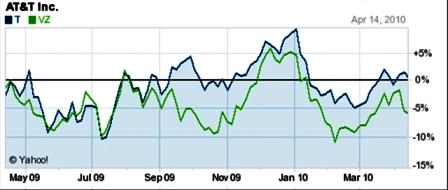High Dividend-Yielding Stocks Can Reap Solid Returns for Cautious Investors
/
In April 2010 and March 2009 I highlighted some stocks that pay decent dividends, as an alternative to low yielding bank CDs and bonds. The market was up a nice 40% from March 2009 to April 2009. Throw in a 4 to 5% dividend and you were looking pretty good!
From April 2010 to today (December 2011), the market was fairly flat overall. While the Dow Jones Industrials were up 5.5%, the broader S&P 500 index was flat. Given the volatility of the market with the European debt crisis, ongoing U. S. economy concerns and other current events, investing in the stock market can make you sick to your stomach. But other low-risk investments like bank CDs yield practically nothing.
As an alternative, check out some of these high-yielding stocks. While there were a couple duds, overall these stocks were up nearly 6% over the last 18 months, beating the S&P 500. Plus, they paid investors between 4 and 5% in cold, hard cash! Here's an update.
- Altria (Symbol: MO) Stock was $21 in April 2010 and is $29 today ($17 in March 2009). With a current yield of 5.6%, why not profit on someone else's vice (hopefully not yours...lung cancer will cost you plenty long-term).
- BP plc (BP) BP was one of only 2 duds in this line-up but only because of the Gulf oil spill in May 2010. It is at $40 today, down from $60 in April 2010 (t







